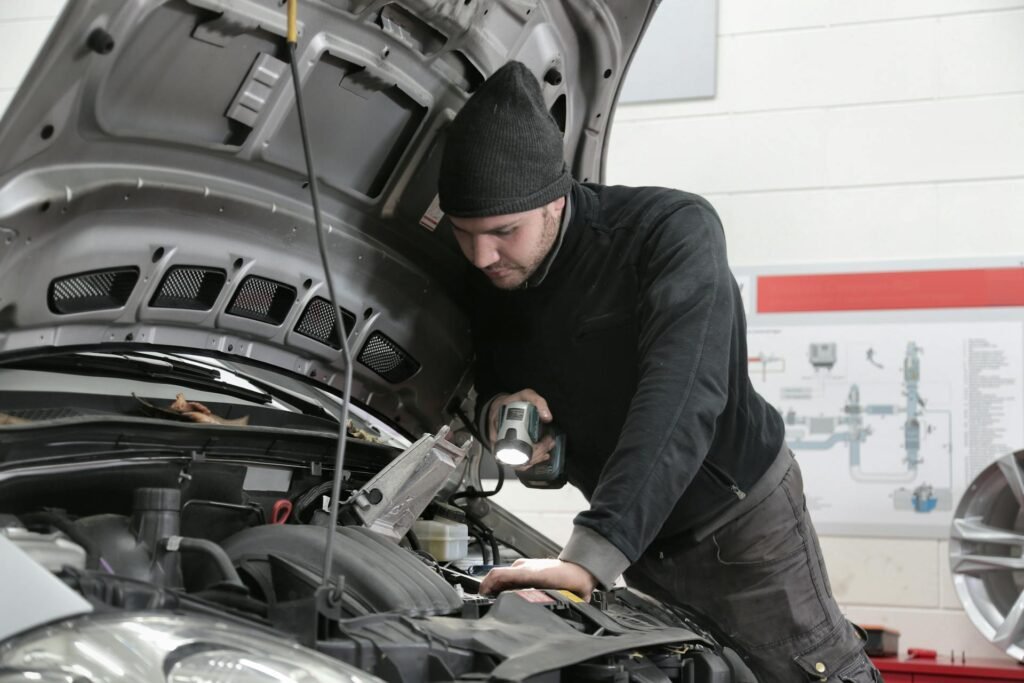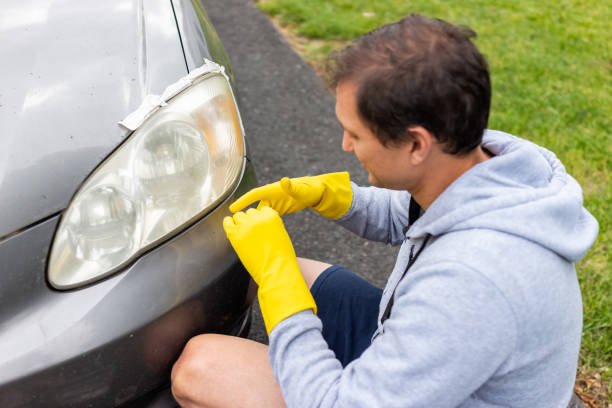When to Service Your Vehicle: Key Indicators for Timely Maintenance

Owning a car comes with significant responsibility beyond just driving it. Regular maintenance ensures your vehicle remains reliable, safe, and efficient.
Recognizing when your car needs maintenance can prevent breakdowns, extend your vehicle’s lifespan, and save you money in the long run. This comprehensive guide will help you understand the signs that your car needs attention, provide tips for routine checks, and offer seasonal maintenance advice.
Importance of Regular Car Maintenance
Safety
Safety is the most crucial reason for regular car maintenance. A well-maintained car is less likely to fail unexpectedly, reducing the risk of accidents.
For instance, regular brake checks ensure you can stop effectively, and proper tire maintenance prevents blowouts that can lead to loss of control.
Performance
Routine maintenance keeps your car running smoothly and efficiently. Regular oil changes, for instance, ensure your engine is lubricated properly, reducing friction and wear. Well-maintained engines perform better, use fuel more efficiently, and produce fewer emissions.
Cost Savings
Preventive maintenance can help you avoid costly repairs by addressing minor issues before they become major problems. For example, replacing a worn-out timing belt on schedule can prevent catastrophic engine damage that would be much more expensive to fix.
Longevity
Routine care extends your vehicle’s life, ensuring you get the most out of your investment. Regular maintenance tasks like changing the oil, rotating tires, and checking fluids help keep your car in top condition, allowing it to run efficiently for years.
Understanding Your Car’s Maintenance Schedule
Manufacturer’s Recommendations
Every car comes with a maintenance schedule specified by the manufacturer. This schedule is based on the expected life cycle of various components and is designed to keep your vehicle in optimal condition. Typically found in the owner’s manual or on the manufacturer’s website, it includes intervals for oil changes, tire rotations, brake inspections, and more.
Example of Manufacturer’s Maintenance Schedule:
Maintenance Task | Interval |
Oil Change | Every 5,000-7,500 miles |
Tire Rotation | Every 5,000-8,000 miles |
Brake Inspection | Every 10,000 miles |
Coolant Flush | Every 30,000 miles |
Transmission Service | Every 60,000 miles |
Following the manufacturer’s recommendations ensures your car is serviced at the right times, keeping it in peak condition.
Personal Driving Habits
Your driving habits also impact your car’s maintenance needs. For instance:
- Frequent Short Trips: These can cause more wear and tear than longer journeys because the engine doesn’t reach its optimal operating temperature, leading to increased moisture and sludge build-up in the engine.
- Driving in Extreme Conditions: Hot, cold, dusty, or humid environments may require more frequent maintenance. For example, driving in hot weather can accelerate the wear on your engine oil and cooling system.
- Heavy Loads and Towing: Regularly carrying heavy loads or towing can put extra strain on your vehicle, necessitating more frequent checks on your transmission, brakes, and suspension.
Understanding how your driving habits affect your car can help you adjust your maintenance schedule accordingly.
Common Signs Your Car Needs Maintenance
Recognizing the signs that your car needs maintenance can help you address issues promptly. Here are some common indicators:
Dashboard Warning Lights
Modern vehicles are equipped with various sensors that monitor the health of your car. When something is amiss, a warning light will appear on your dashboard. Each light has a specific meaning, and it’s essential to understand what each one indicates and take appropriate action.
Unusual Noises
Strange sounds, such as squealing, grinding, or knocking, often indicate something is wrong. These noises can stem from the engine, brakes, or other components.
For example, a squealing noise when you brake could indicate worn brake pads, while a knocking sound from the engine could signal issues with the engine bearings.
Changes in Performance
If you notice your car is not accelerating as smoothly, has reduced fuel efficiency, or handles differently, these could be signs of underlying issues. For instance, sluggish acceleration can be due to a clogged fuel filter, and reduced fuel efficiency might indicate a problem with the fuel injection system.
Unusual Smells
Unpleasant odors, such as burning rubber, oil, or coolant, can signal problems with your vehicle’s components. For example, a burnt rubber smell could indicate a slipping belt, while a sweet, syrupy smell might suggest a coolant leak.
Fluid Leaks
Spotting puddles or stains under your car can indicate leaks. Common fluids include oil, coolant, brake fluid, and transmission fluid. Identifying the type of fluid can help diagnose the problem. For instance, a reddish fluid typically indicates a transmission fluid leak, while a dark brown or black fluid usually points to an oil leak.
Detailed Signs and What They Mean
Engine Oil Light
The engine oil light indicates low oil pressure, which could mean you are low on oil, or there could be an issue with the oil pump. Running your engine with low oil pressure can cause severe damage due to inadequate lubrication.
What to Do:
- Check the Oil Level: Use the dipstick to check the oil level. If it’s low, add the recommended oil type for your vehicle.
- Inspect for Leaks: Look for signs of oil leaks under your car.
- Consult a Mechanic: If adding oil doesn’t turn off the light, have your vehicle inspected by a professional to diagnose potential issues with the oil pump or other engine components.
Brake Warning Light
The brake warning light can indicate several issues, such as low brake fluid, worn brake pads, or a problem with the braking system.
What to Do:
- Check Brake Fluid: Ensure the brake fluid level is within the recommended range.
- Inspect Brake Pads: Look for wear on the brake pads. If they are thin, replace them.
- Seek Professional Help: If the light remains on, have a mechanic inspect your braking system to ensure it’s functioning correctly.
Battery Light
When the battery light comes on, it typically means there’s a problem with the charging system. This could be due to a failing alternator, a loose battery connection, or a dead battery.
What to Do:
- Check Battery Connections: Ensure the battery terminals are clean and tightly connected.
- Test the Battery: Use a voltmeter to check the battery voltage. A fully charged battery should read around 12.6 volts when the engine is off and between 13.7 to 14.7 volts when the engine is running.
- Visit a Mechanic: If the battery and connections are fine, have the alternator and charging system inspected.
Tire Pressure Light
The tire pressure monitoring system (TPMS) alerts you when your tire pressure is too low. Driving with underinflated tires can affect handling, fuel efficiency, and tire lifespan.
What to Do:
- Check Tire Pressure: Use a tire pressure gauge to check and adjust the pressure to the manufacturer’s recommended levels, usually found on a sticker inside the driver’s door or in the owner’s manual.
- Inspect Tires for Damage: Look for signs of punctures or wear that could cause air leaks.
- Reset the TPMS: After adjusting the pressure, reset the TPMS according to your vehicle’s instructions.
Check Engine Light
The check engine light is one of the most common yet ambiguous warning lights. It can indicate a wide range of issues, from a loose gas cap to more severe engine problems.
What to Do:
- Check the Gas Cap: Ensure the gas cap is tightened properly, as a loose cap can trigger the light.
- Use a Diagnostic Tool: An OBD-II scanner can read the error codes from your car’s computer to help pinpoint the issue.
- Consult a Mechanic: If the issue is not apparent or the light remains on, have a professional diagnose and repair the problem.
Routine Checks You Can Do Yourself
While some maintenance tasks require professional attention, many can be performed at home with minimal tools.
Checking Oil Levels
Regularly checking and topping up your engine oil is essential. Low oil levels can lead to engine damage.
Steps to Check Oil:
- Park on Level Ground: Ensure your car is on a flat surface to get an accurate reading.
- Wait for the Engine to Cool: Turn off the engine and wait for a few minutes.
- Locate the Dipstick: Pull out the dipstick, wipe it clean, and reinsert it fully.
- Check the Level: Remove the dipstick again and check the oil level against the marked indicators.
- Add Oil if Needed: If the level is low, add the recommended oil type for your vehicle.
Monitoring Tire Pressure
Properly inflated tires improve fuel efficiency and handling.
Steps to Check Tire Pressure:
- Use a Tire Pressure Gauge: Remove the valve cap and press the gauge onto the valve stem.
- Read the Pressure: Compare the reading to the recommended pressure listed in your owner’s manual or on the door sticker.
- Adjust if Necessary: Add or release air to achieve the correct pressure.
- Check Regularly: Make it a habit to check tire pressure at least once a month and before long trips.
Inspecting Brake Pads
Check the thickness of your brake pads. If they are thin or you hear a squealing noise, it’s time to replace them.
Steps to Inspect Brake Pads:
- Remove the Wheel: Use a jack to lift the car and remove the wheel.
- Inspect the Pads: Look at the brake pads through the caliper. Pads less than 1/4 inch thick need replacing.
- Check for Wear Indicators: Some brake pads have built-in wear indicators that make a squealing noise when the pads are worn.
Checking Coolant Levels
Ensure your coolant levels are adequate to prevent your engine from overheating. Check the coolant reservoir and top up as needed.
Steps to Check Coolant:
- Locate the Coolant Reservoir: Usually a translucent tank near the radiator.
- Check the Level: The tank should have markings for “full” and “low.” Ensure the coolant is between these marks.
- Top Up if Needed: Add the appropriate mix of coolant and water (usually 50/50) if the level is low.
Inspecting Belts and Hoses
Look for signs of wear, cracks, or leaks in your vehicle’s belts and hoses. Replacing them before they fail can prevent breakdowns.
Steps to Inspect Belts and Hoses:
- Visual Inspection: Look for cracks, fraying, or glazing on belts.
- Check Tension: Press down on the belt. It should feel firm but not overly tight.
- Inspect Hoses: Squeeze the hoses. They should feel firm, not soft or spongy.
- Look for Leaks: Check for any signs of fluid leaks around the hoses and connections.
Seasonal Maintenance Tips
Winter Preparation
Winter weather can be harsh on your vehicle. Preparing your car for winter can help prevent issues and ensure it runs smoothly.
Battery
Cold weather can affect battery performance. Ensure your battery is in good condition.
Tips:
- Test the Battery: Have your battery tested for capacity and charge.
- Clean Terminals: Remove any corrosion from the battery terminals.
- Consider a Battery Heater: In extremely cold climates, a battery heater can help maintain performance.
Tires
Consider using winter tires for better traction on snow and ice.
Tips:
- Check Tread Depth: Ensure your tires have adequate tread for winter conditions.
- Switch to Winter Tires: These provide better grip in snow and ice.
- Check Pressure Regularly: Cold weather can lower tire pressure, so check and adjust it frequently.
Fluids
Use winter-grade oil and ensure your antifreeze levels are sufficient.
Tips:
- Switch to Winter Oil: Some oils are better suited for cold temperatures, providing better lubrication.
- Check Antifreeze Levels: Ensure the antifreeze mix is appropriate for your climate (usually a 50/50 mix with water).
- Use Winter Washer Fluid: Prevents the washer fluid from freezing and improves visibility.
Summer Preparation
Hot weather brings different challenges. Preparing your car for summer can prevent overheating and ensure comfort.
Cooling System
Check your coolant levels and inspect the radiator for any issues.
Tips:
- Inspect Radiator and Hoses: Look for leaks or damage.
- Flush the Cooling System: Replace old coolant to maintain optimal cooling performance.
- Check the Thermostat: Ensure it opens and closes correctly to regulate engine temperature.
Air Conditioning
Make sure your AC system is working properly to stay comfortable in hot weather.
Tips:
- Test the AC: Run the AC to ensure it blows cold air.
- Check Refrigerant Levels: If the air isn’t cold, you might need to recharge the refrigerant.
- Inspect Belts: Ensure the AC compressor belt is in good condition and properly tensioned.
Tire Pressure
Hot weather can increase tire pressure, so check and adjust accordingly.
Tips:
- Monitor Pressure Regularly: Check tire pressure more frequently in summer.
- Adjust as Needed: Follow the manufacturer’s recommended tire pressure to account for temperature changes.
How to Choose a Mechanic or Service Center
Choosing the right mechanic is crucial for quality maintenance and repairs.
What to Look for in a Mechanic
- Certifications: Look for ASE-certified mechanics. ASE (Automotive Service Excellence) certification ensures the mechanic has passed rigorous tests and has the necessary skills.
- Experience: Experienced mechanics are more likely to diagnose and fix problems correctly. Look for a mechanic with several years of experience working on your car’s make and model.
- Reputation: A good reputation is often a sign of reliable service. Check for positive reviews and ratings online or through word-of-mouth recommendations.
Questions to Ask
When choosing a mechanic, ask the following questions to ensure you’re getting the best service:
- What is included in the service? Ensure you understand what the maintenance or repair service covers.
- Are there any warranties on the parts or labor? A reputable mechanic should offer warranties on their work and the parts used.
- How long will the service take? Get an estimated timeframe for the completion of the service to plan accordingly.
Reading Reviews and Getting Recommendations
Online reviews and recommendations from friends or family can help you find a trustworthy mechanic. Look for:
- Consistent Positive Feedback: Mechanics with consistently good reviews are more likely to provide reliable service.
- Specific Praise: Pay attention to reviews that mention specific aspects of service, such as honesty, thoroughness, and fair pricing.
- Word-of-Mouth: Ask friends, family, or colleagues for recommendations, as personal experiences can provide valuable insights.
The Importance of Keeping Maintenance Records
Keeping detailed records of your car’s maintenance history can be beneficial in several ways:
Resale Value
A well-documented maintenance history can increase your car’s resale value. Potential buyers are more likely to pay a higher price for a vehicle that has been well-maintained and has a documented service history.
Track Maintenance
Detailed records help you keep track of what has been done and when future services are due. This ensures you never miss a scheduled maintenance task and can help prevent potential issues.
Warranty Claims
Some warranties require proof of regular maintenance. Keeping thorough records ensures you can provide the necessary documentation if you need to make a warranty claim.
Insurance Claims
In case of an accident, detailed maintenance records can support insurance claims, showing that your vehicle was in good condition prior to the incident.
How to Keep Records
- Paper Files: Keep a physical folder with receipts, invoices, and service records.
- Digital Records: Use a digital system or app to track maintenance records, making it easy to access and share information when needed.
- Manufacturer’s Portal: Some car manufacturers offer online portals where you can log and track your vehicle’s maintenance history.
Regular maintenance is the key to keeping your car running smoothly and efficiently. By paying attention to the signs that your vehicle needs attention and performing routine checks, you can prevent major issues and extend the life of your car.
Remember to follow your manufacturer’s maintenance schedule, adapt to your driving habits, and choose a reliable mechanic for professional services. With proper care, your car will continue to serve you well for many years to come.
In summary, maintaining your car involves:
- Following Manufacturer’s Recommendations: Adhering to the maintenance schedule outlined in your owner’s manual.
- Monitoring Warning Signs: Paying attention to dashboard lights, unusual noises, changes in performance, smells, and leaks.
- Conducting Routine Checks: Regularly inspecting oil levels, tire pressure, brake pads, coolant levels, and belts/hoses.
- Preparing for Seasonal Changes: Adjusting maintenance routines for winter and summer conditions.
- Choosing the Right Mechanic: Selecting a qualified, experienced, and reputable mechanic.
- Keeping Detailed Records: Maintaining comprehensive records of all maintenance and repairs.
By taking these steps, you can ensure your vehicle remains safe, reliable, and efficient, ultimately saving you time, money, and stress in the long run.


